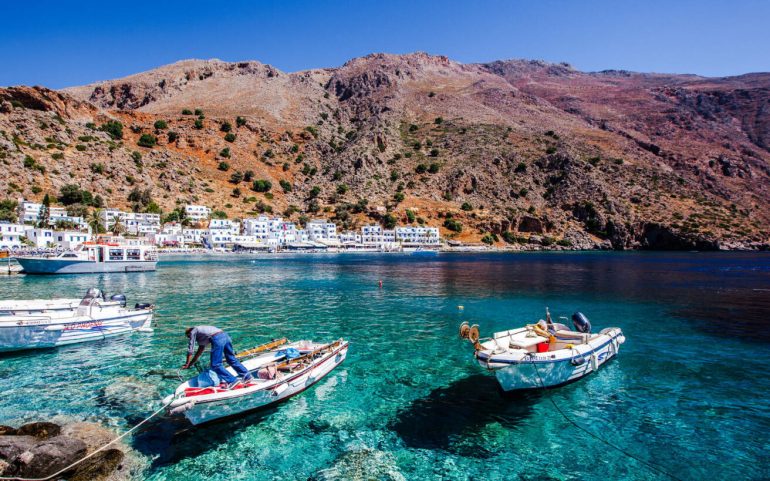How many times have you been to someone? destination and have you ever wondered "am I in the right place"? Definitely few and you would definitely have visited one of the settlements below.
The reason for beautiful, graphic apart in favorite and popular Greek islands that, however, do not fit and do not refer, aesthetically everything and a philosophical one, to the destination where they are located.

The seaside village in the southern part of the prefecture, 71 km from the center of Chania, is a famous holiday resort, especially during the summer. It may have a road all the way, "sown" with taverns, cafes and rooms to let, but once you see it, you won't look for anything more.
The pale white houses are very reminiscent of him Cycladic landscape "embrace" the small port, creating a picturesque image that you would expect to meet on a favorite island of the Cyclades. And yet you are in Crete. The sights of Loutros include the building where the government was housed during the Revolution of 1821, the ruins of ancient Aradena with the church of the Archangel Michael, as well as those of Anopolis.
If you are based in Loutro, you can explore the gorge of Samaria and Aradena or climb Anopolis and enjoy the magnificent view of the Libyan Sea.
From here, boats will also depart to take you to the southernmost point of Europe, the small island of Gavdos. You will reach Loutro after 20 minutes by boats departing from Sfakia.
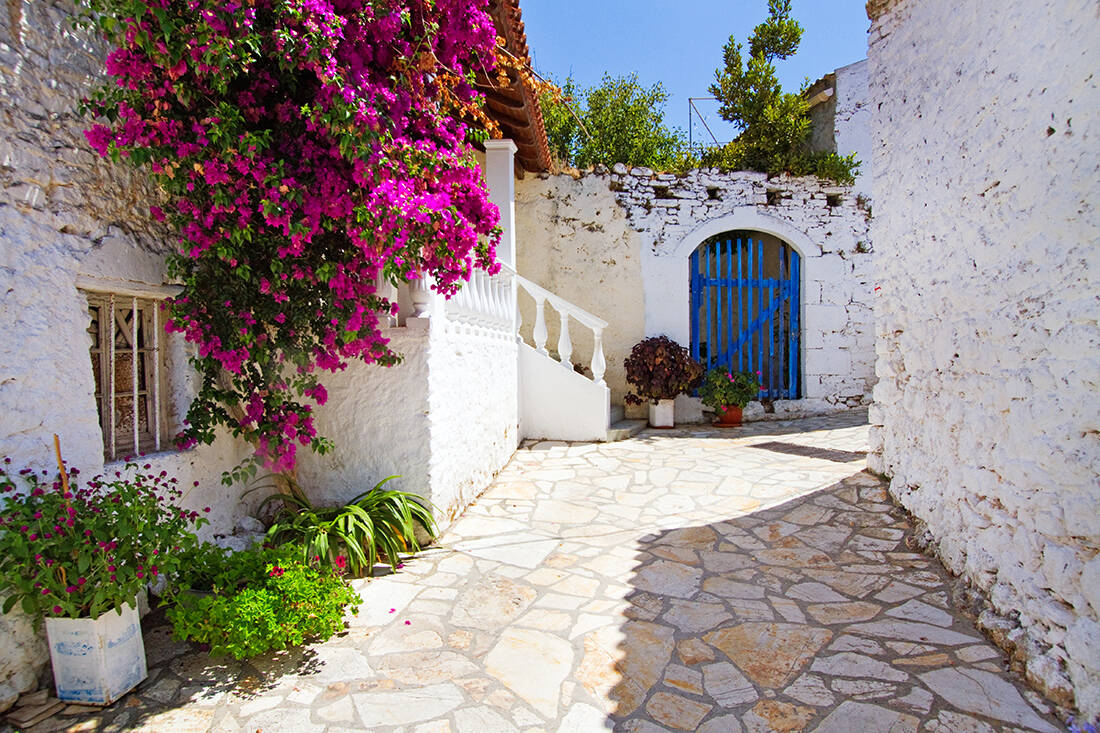
It is located in the northwestern part of Corfu, in a wonderful location on a mountain cape and is one of the oldest settlements on the island.
Afionas, according to tradition, owes its name to the local grape variety, it is a picturesque and colorful village, with beautiful houses that follow the local architecture, however in several places it brings to mind images from Cyclades, old mansions and labyrinthine stone cobbled streets that invite visitors to the village to "get lost" in their life. Impressive is the church of Agios Ioannis, built in 1636, with its imposing tall bell tower.
A reference point of Afionas is the panoramic view to the beaches of Arillas and Agios Georgios ton Pagon, the endless blue and the Diapontia islands. The western location of the village also provides a dreamy view of the magical sunset.
The rock where the village is built ends in a small isthmus, with beaches on both sides, also known as Porto Timoni. The beaches are not visible from the village and are approached by trails and a route that takes about 30-40 minutes. Pure turquoise crystal clear waters, small pebbles, rocks and cliffs covered by lush nature compose its wonderful natural scenery.
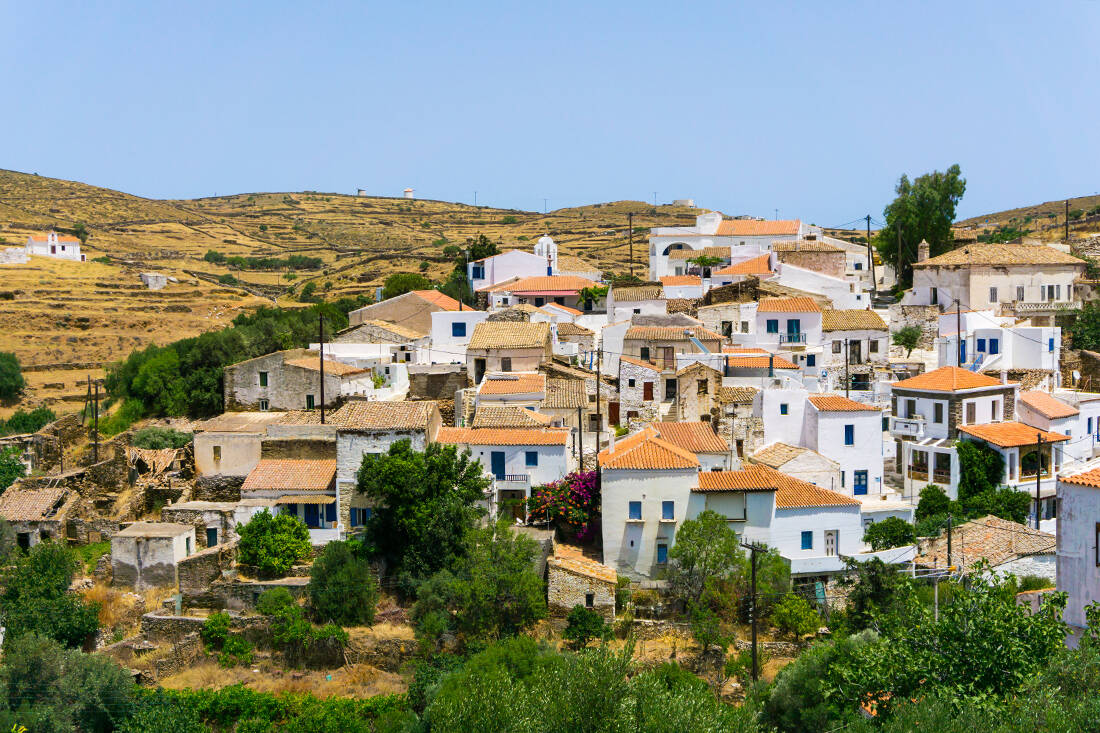
Exactly in the center of the hinterland of Kythnos, the picturesque village of Dryopida is found, with the special architecture that does not follow the styles of the typical Cycladic and the only one of the island that is not visible from the sea.
Also known as the Village, it is located at a very crucial point, as from here all the wanderings start in all directions of the island such as Kanala, Agios Dimitrios, Flambouria and the areas in the southern part of Kythnos.
Architecturally, it is of great interest, as if one observes it, one will see that the architecture of its buildings is quite different from the typical Cycladic one. Two floors buildings with tiled roofs, which, according to many, are attributed to the fact that the inhabitants of the settlement had a special appeal to the art of ceramics. This is the reason why the village has been characterized as a traditional settlement.
A reference point for the village is the Katafiki cave, which is located in Dryopida, with its impressive stalactites and stalagmites. It is considered one of the largest in Greece, while both during the Turkish occupation and during the German occupation it functioned as a shelter.
Other notable places in the village are the Byzantine Museum, housed in the church of St. George, the Folklore Museum, and the Agromousio. At the same time, the public interest is drawn to the Monument of the Fallen, the old windmills (located on a hill just outside the settlement), as well as the church of Agios Minas with its impressive wood carving.
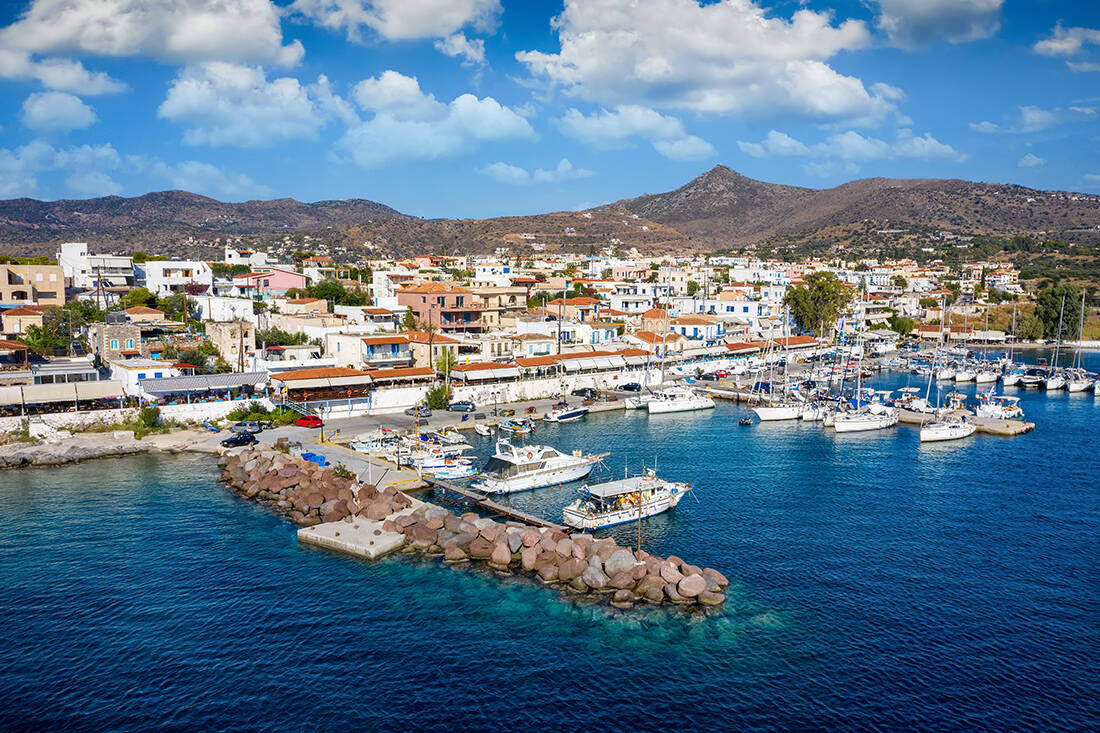
In the southwestern part of the island, and at a distance of 9 km from the port of Aegina, its most famous fishing village is found. Perdika is one of the most popular destinations on the island, while it is a threshing floor for the boats that come here to taste its fresh fish, for which it is famous.
Narrow picturesque streets and low whitewashed houses with flowery courtyards that communicate with each other, images that evoke one could say in a traditional Cycladic village.
The elevated seaside promenade, which looks like a "balcony" just above the sea, is full of ouzo and taverns serving the famous fish and seafood of the village, while here you will find cafes and bars for more relaxed moments in the afternoon to evening.
The village has two beaches, with the first meeting at the entrance of the port and the second after the cape of Perdika, to the left of the church of Agios Sostis. The most daring ones descend the stone steps from the pedestrian street that lead to landscaped rocks for bathing, with crystal clear waters.
The reference point of the village is the cape of Perdika with the church of Agios Sostis, which celebrates with a big festival every year on September 7, as well as the amazing view of the island of the Monastery just opposite.
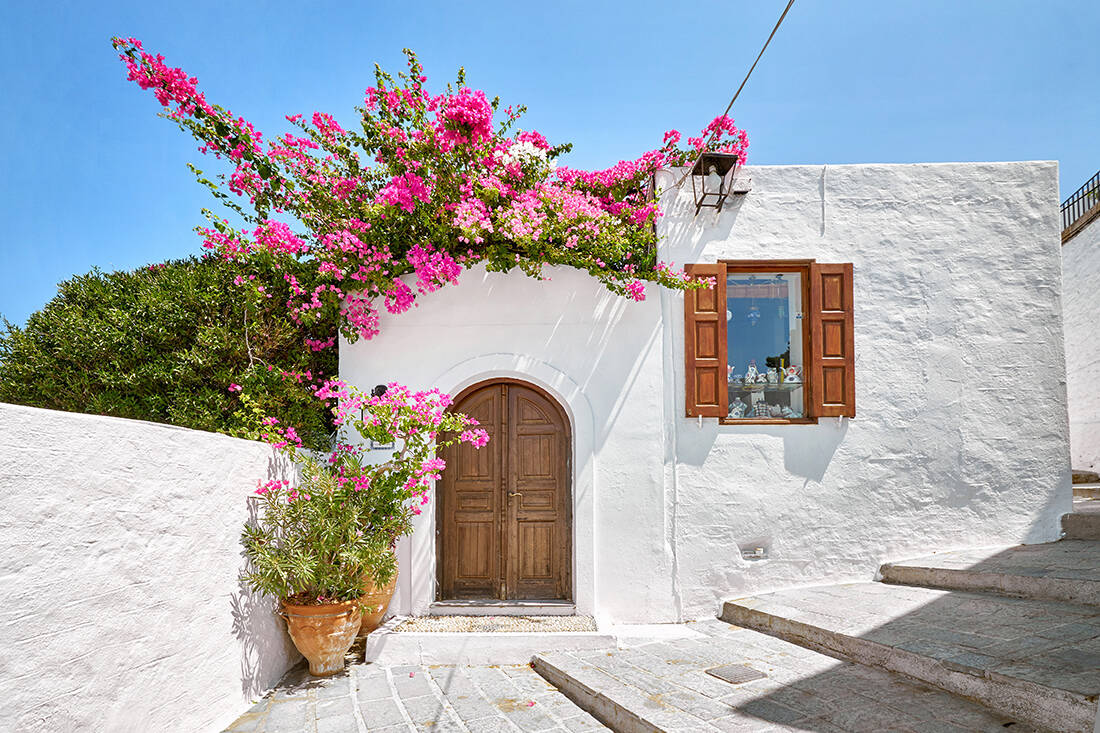
There are many who call her "Cycladic woman of Rhodes", not unjustly considering that her image refers more to Cyclades than to Δωδεκάνησα. Lindos, in the southeastern part of the island and 50 km from the city center of Rhodes, welcomes its visitors amphitheatrically built.
The entry of cars in the settlement is prohibited, so those who approach it with their car, leave it in the municipal parking lot, before the turn that leads to the central square of Lindos. Clear alleys with impressive captain's houses with characteristic pebbled courtyards, beautiful picturesque corners and pictures with colorful bougainvillea, shops with tourist items, island cafes and taverns compose the wonderful "puzzle" of Lindos.
The most important attractions of the area are the famous Acropolis of Lindos with the ruins of the temple of Athena Lindia, which was built in the 4th century BC, the Knights Templar, and the church of St. John. It is worth mentioning that Lindos, together with Ialyssos and Kameiros, were the three ancient cities of the island.
Lindos also owns two of the most famous beaches on the island, that of St. Paul, just outside the village with the homonymous church, and the first (and largest) that bears the name of the settlement.
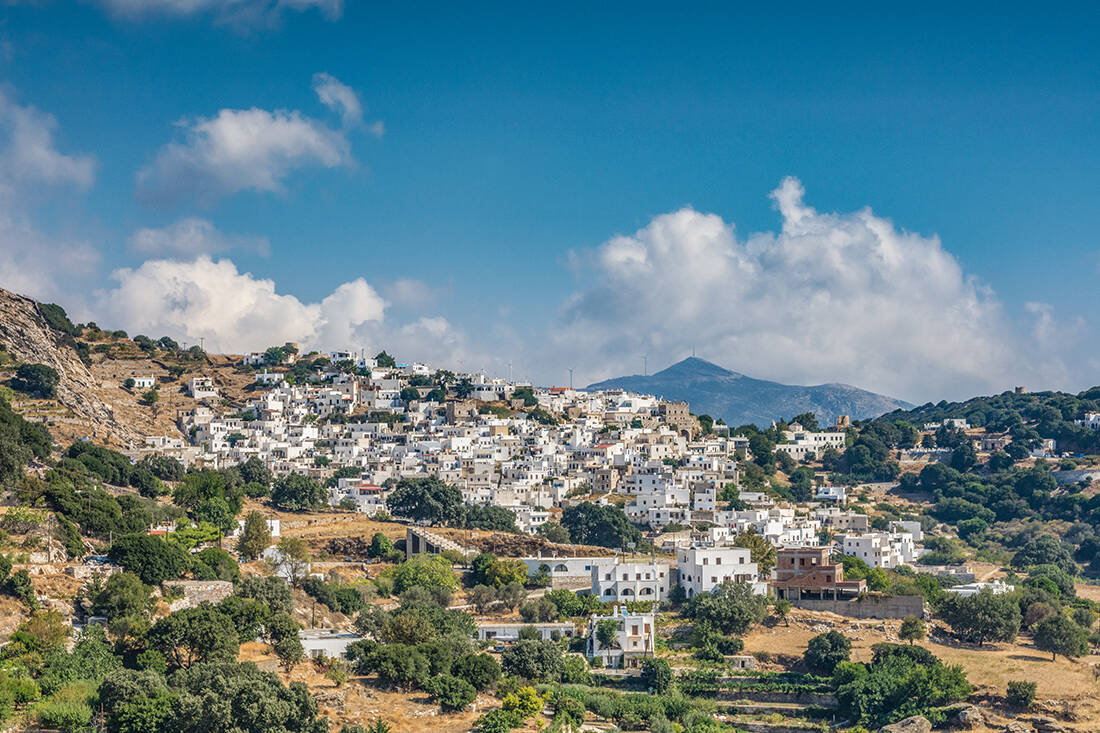
Typical Cycladic cobbled streets architecture with vaulted arches, beautiful old two-storey houses and squares with traditional cafes, impressive Venetian towers and interesting museums compose the image of the most popular mountain village of Naxos.
The case of Apeiranthos, however, is not like the others. This particular village does not seem to fit on the island, not because of the image, but because of the philosophy! Although, at first sight, the mountain village of Apeiranthos, "t 'Aperathou" - as the people of Naxos call the village, looks like all Cycladic villages, the visitor who will dedicate time to it and will come in contact with the locals will understand that this is not the case. On the contrary, he will have the feeling that he is in a village in mountainous Crete.
Many customs and traditions of the locals are similar to those of the Cretans, from their festivities there are few times when the Cretan lyre and the lute will be absent, while the local, traditional costumes have several similarities. The inhabitants make their own mantinades - the so-called kotsakia - while their local dialect is more characteristic in Crete, than in Naxos.
Where do so many similarities with Crete come from? There are many stories about the origin of the inhabitants of Apeiranthos, with their roots being lost over the years, and the myths from the truths being, now, indistinguishable. However, one of them that is still spread today has to do with Theseus and his return from Crete after he had killed the Minotaur. So, when he left Ariadne in Naxos, she hid in Apeiranthos so that the Cretans who were pursuing her would not find her. According to the locals, the Sfakian warriors who arrived in the village were dazzled by its beauty, loved it and stayed in it, building its first seven families.
In addition, there are several references to many Cretan painters who arrived in Apeiranthos during the Byzantine era, leaving their artistic imprint on the village. Today, in fact, Apeiranthos and Sfakia have been twinned since 2003 and officially, now, at the municipal level.
